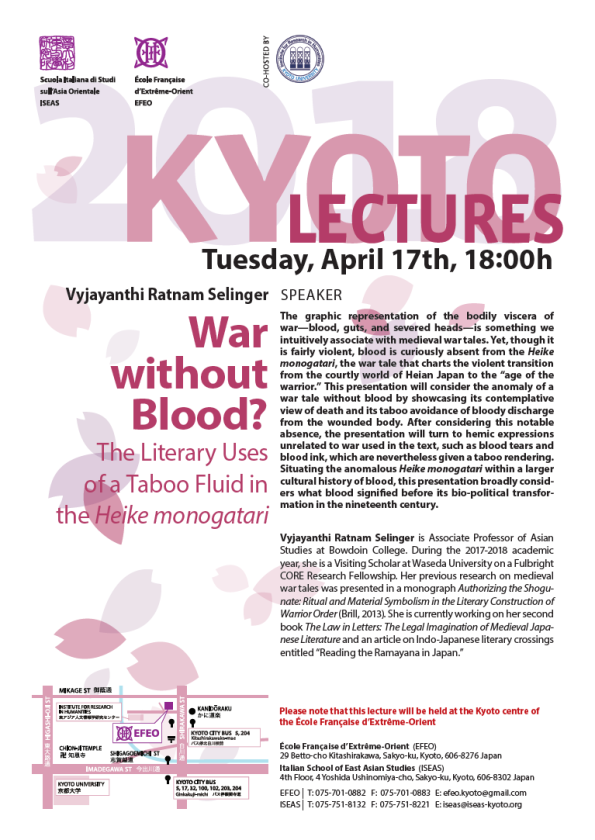The graphic representation of the bodily viscera of war?blood, guts, and severed heads?is something we intuitively associate with medieval war tales. Yet, though it is fairly violent, blood is curiously absent from the Heike monogatari, the war tale that charts the violent transition from the courtly world of Heian Japan to the “age of the warrior.” This presentation will consider the anomaly of a war tale without blood by showcasing its contemplative view of death and its taboo avoidance of bloody discharge from the wounded body. After considering this notable absence, the presentation will turn to hemic expressions unrelated to war used in the text, such as blood tears and blood ink, which are nevertheless given a taboo rendering. Situating the anomalous Heike monogatari within a larger cultural history of blood, this presentation broadly consid-ers what blood signified before its bio-political transfor-mation in the nineteenth century.
Please refer to the attached document.
Tuesday, April 17th, 18:00h
Please note that this lecture will be held at the Kyoto centre of the École Française d’Extrême-Orient.

